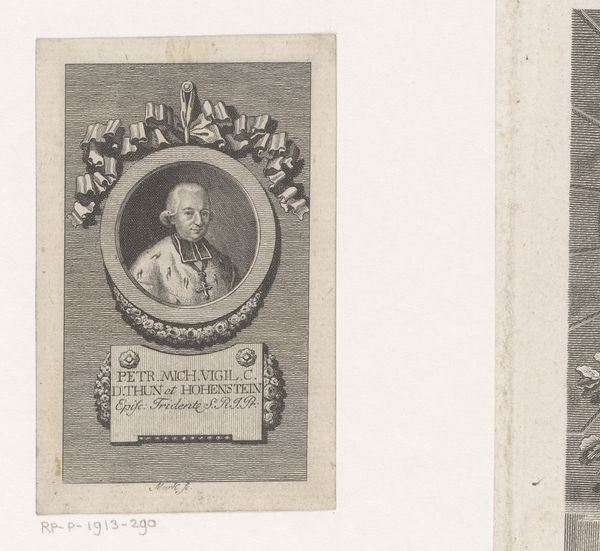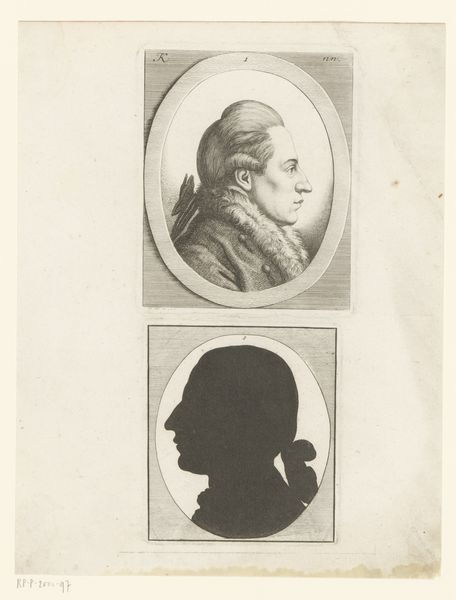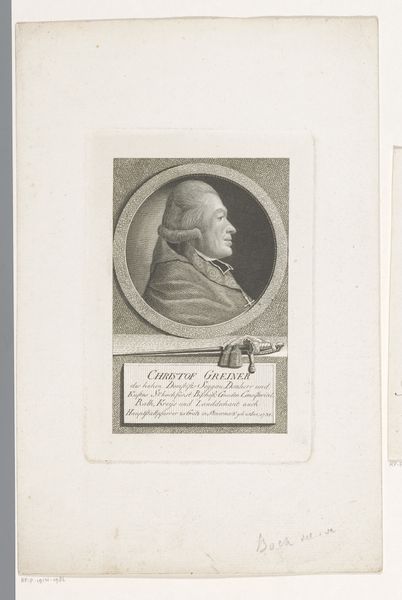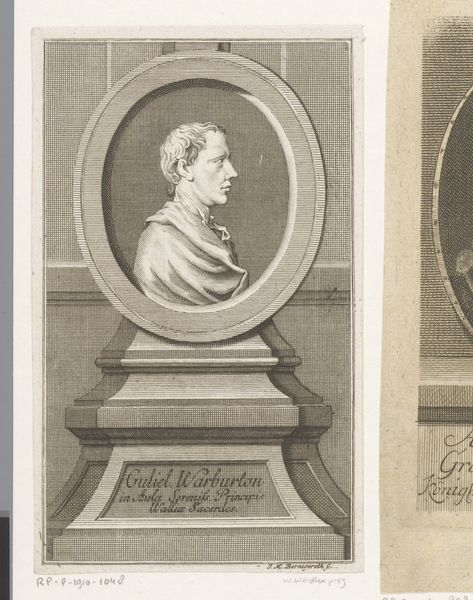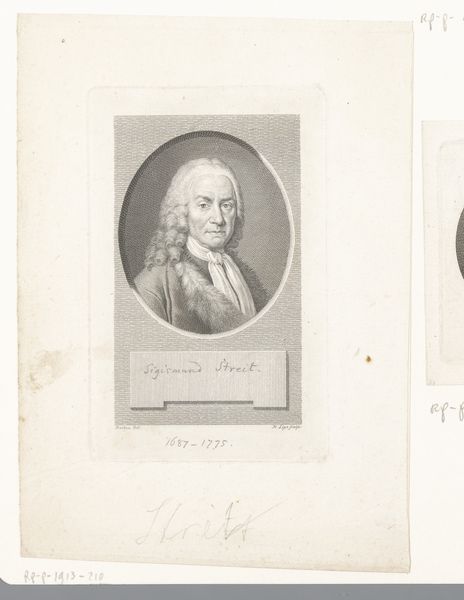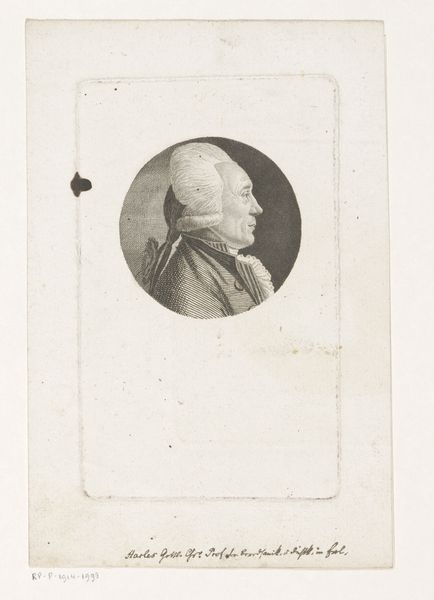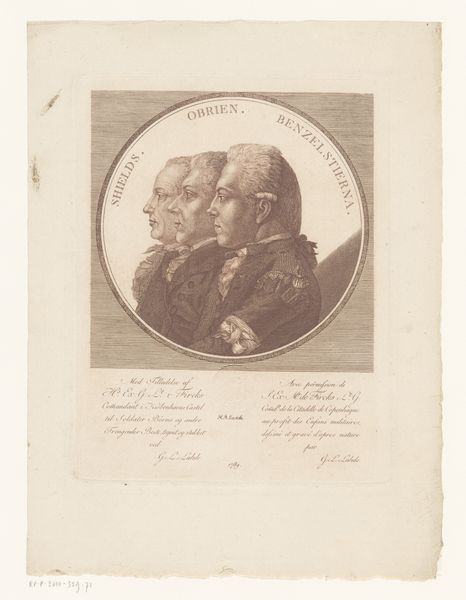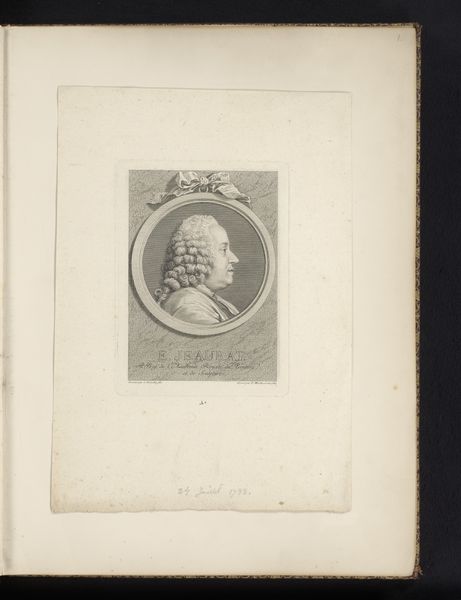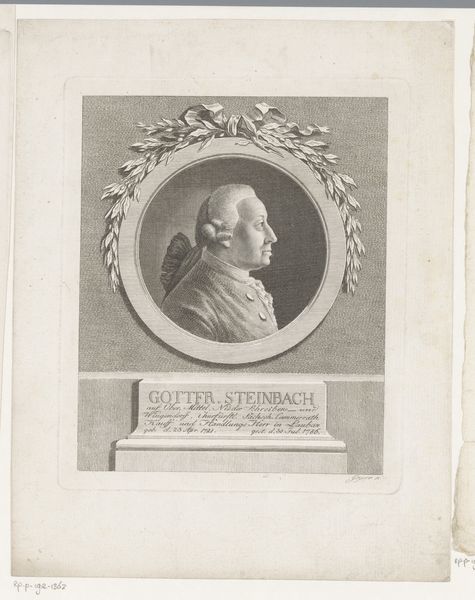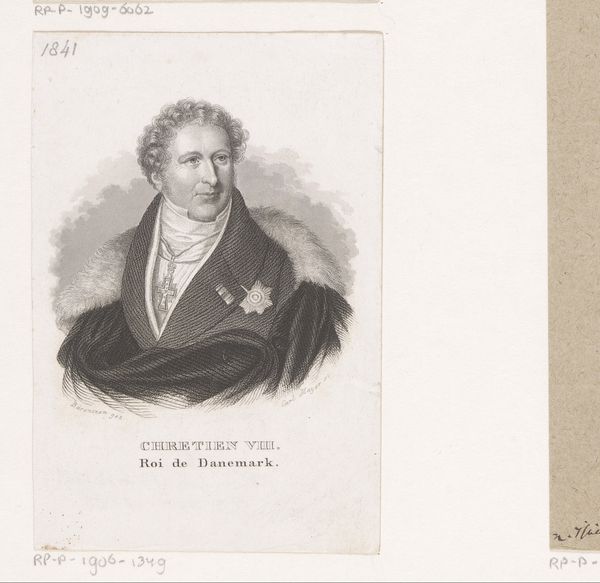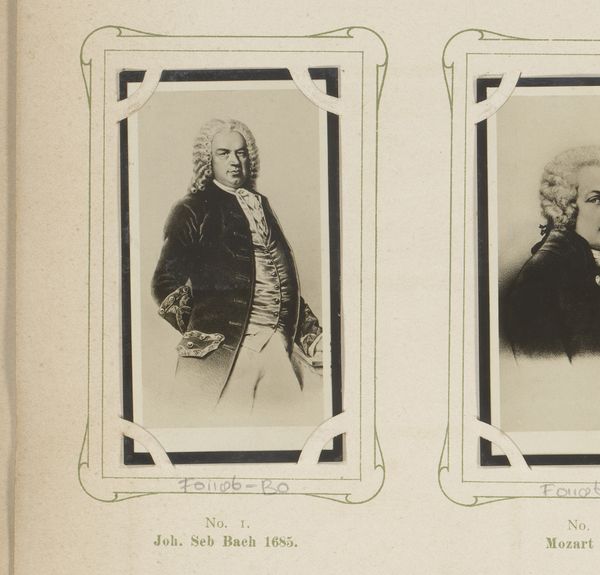
print, paper, engraving
#
portrait
#
neoclacissism
# print
#
figuration
#
paper
#
line
#
engraving
Dimensions: height 95 mm, width 73 mm
Copyright: Rijks Museum: Open Domain
Curator: Immediately, my eye is drawn to the subject's severe wig and profile – so crisp and formal. Editor: And mine goes straight to the medium. This is an engraving on paper, "Portret van Georg Theodor Strobel," dating from somewhere between 1780 and 1820, currently held in the Rijksmuseum. What interests me is how this portrait, designed for reproduction, helped shape the public image of Strobel, whoever he was. Curator: The sharp lines are fascinating. You can almost feel the burin cutting into the metal plate to create that incredibly controlled shading. Look at how it gives depth to his jacket. It really embodies the Neoclassical ideal of order and precision. Editor: Indeed, engraving facilitated the broad dissemination of images and ideas. So, this wasn’t simply a representation of Strobel, but also a carefully constructed public persona, sanctioned and consumed within the socio-political structures of the time. Who got to be portrayed, how they were portrayed - it all reinforces hierarchies. Curator: Precisely! And the skill! Look at the textures—the stark white of the collar against the patterned waistcoat, achieved only through lines! Think of the intense labour, the training that went into producing such a consistent finish! It moves beyond mere representation and into the realm of refined artistry, even on a smaller scale. Editor: Right. And how were these prints distributed? Sold individually, bound into books, displayed in public spaces? Who were the intended consumers of this image? Understanding those networks tells us so much about how power and influence circulated in that period. The print medium allowed art to enter homes and smaller collections—was it used to signal taste? Curator: Yes, this makes me think that the labour invested becomes part of the perceived value, making this more than a portrait; a crafted commodity in itself. Editor: Ultimately, this isn't just a portrait of an individual, it's a mirror reflecting the values and the very mechanisms of image production and power distribution in a specific era. It's really telling to consider all these factors that shaped public perception and cultural norms. Curator: I think looking through that lens of production certainly encourages us to really reflect on the nature of representation. Editor: Definitely; I will not view a portrait the same after analysing the details of its historical reach.
Comments
No comments
Be the first to comment and join the conversation on the ultimate creative platform.

